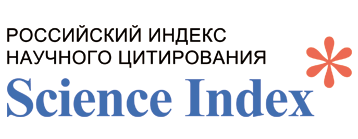KINETICS OF ELECTRODEPOSITION OF INDIUM ON SOLID ELECTRODES FROM CHLORIDE SOLUTIONS
Keywords:
indium, electrodeposition, mass transfer, charge transfer, diffusion coefficient, quasi-reversibility, rate constantAbstract
Using the methods of cyclic voltammetry and chronoamperometry, the electroreduction of indium on titanium, platinum and glassy carbon electrodes from perchlorate-containing chloride electrolytes has been studied. The quasi-reversible character of the process under investigation for all the above electrodes are established on the basis of the analysis of the difference in potentials of the peaks on the forward and reverse course of the sweep and the relationship between the current of the reduction peak and the rate of polarization. The overvoltage of indium release in the peak on Pt, GC, Ti electrodes was 158, 111, 64 mV, respectively. The constants of the rate of charge transfer and mass transfer of indium electrodeposition are calculated using the Delahay and Cottrell equations. A comparative analysis of the obtained constants showed that they had large values in the case of a titanium electrode and amounted to 1.0610-3 and 4.510-4 cm/s, respectively. The results obtained indicate the preferred use of titanium in the electrochemical purification of rough indium.
References
[1] Alfantazi A.M., Moskalyk R.R. Processing of indium: a review // Minerals Engineering. 2003. Vol. 16. P. 687-694.
[2] Munoz A.G., Saidman S.B., Bessone J.B. Electrodeposition of Indium onto Vitreous Carbon from Acid Chloride Solutions // Journal of The Electrochemical Society. 1999. Vol. 146, N 6. P. 2123-2130.
[3] Saidman S.B., García S.G., Bessone J.B. Electrochemical behaviour of Al-In alloys in chloride solutions // J. Appl. Electrochem. 1995. Vol. 25. P. 252258.
[4] Breslin C.B., Carroll W.M. The activation of aluminium by indium ions in chloride, bromide and iodide solutions // Corros. Sci. 1993. Vol. 34. P. 327-341.
[5] Saidman S.B., Bessone J.B. Activation of aluminium by indium ions in chloride solutions // Electrochim. Acta. 1997. Vol. 42. P. 413-420.
[6] Rakhymbay G.S., Nauryzbayev M. K., Burkitbayeva B. D., Argimbaeva A. M., Jumano- va R., Kurbatov P., Eyraud M., Knauth P., Vacandio F. Electrochemical deposition of indium: nucleation mode and diffusional limitation //Russian Journal of Electrochemistry. 2016. Vol. 52, N 2. Р. 99-105.
[7] Burkitbaeva B.D., Argimbaeva A.M., Rakhimbai G.S., Beisenova G.S., Avchukur Kh., Kurbatov A.P., Nauryzbaev M.K. Study of Electrochemical Transmission in India on Titanium Electrode Method of Cycle Voltameterometry // Chemical Journal of Kazakhstan. 2015. N 3 (51). P. 34-41.
[8] Damaskin B.B., Petri О.А., Цирлина Г.А. Electrochemistry / 2-nd isp. М.: Chemistry, Colosseum, 2006. 672 p.
[9] Delahay P. Theory of Irreversible Waves in Oscillographic Polarography // J. Am. Chem. Soc. 1953. Vol. 75. P. 1190-1196.
[10] Allen J. Bard, Larry R. Faulkner. Electrochemical methods: fundamentals and applications. 2nd ed. John Wiley & Sons, Inc. 2001. P. 785-808.
[11] Protsenko V.S., Kityk A.A., Danilov F.I. Voltammetry study of Cr(III)/Cr(II) system in aqueous methanesulfonate solutions // Journal of Electroanalytical Chemistry. 2011. N 661. P. 213-218.
[12] Kityk A.A. Use the "Insert Citation" button to add citations to this document.
[13] Protsenko V.S., Danilov F.I. Voltammetry study of Cr(III)/Cr(II) system in methanesulfonate and sulfate solutions: Temperature dependences // Journal of Electroanalytical Chemistry. 2012. N 689. P. 269-275.
[14] David R Lide. CRC Handbook of chemistry and physics. English: 89 th. Ed. Boca Raton [etc.] CRC Press-Taylor & Francis cop. 2008. 2736 р.
[15] Myomandr F., Sadki S. e.a. Electrochemistry = Electrochimie / F. Miomander [and c.]; per. s fr VN Grasevius; sub arch. Y.D. Gamburge, V.А. Safonova. M.: Techosphere, 2008. 359 p. [16] Yong-Kook Choi, Boom-Soo Kim, Su-Moon Park. Electrochemical Reduction of Thionyl Chloride Studied by Cyclic Voltammetry, Chronocoulometry, and Chronoamperometry // J. Electrochem Soc. 1993. Vol. 140. P. 11-18.

















